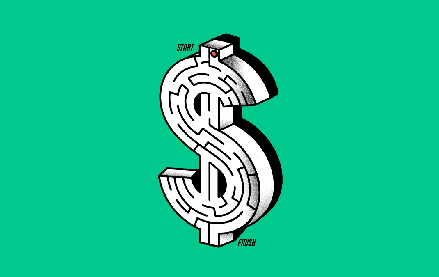‘More accountability’: Unilever creates its own network for trusted publishers
Unilever is laying down the law with publishers, creating a new set of guidelines they must adhere to before it buys ads from them.
The advertiser is rolling out what it calls the Trusted Publishers network of global, regional and local online publishers and platforms it will prioritize spend through its trading desk. Publishers in the network must adhere to criteria set by Unilever’s media team led by svp of global media Luis Di Como.
“What we’re doing is about giving Unilever an extra level of control to secure more accountability,” said Di Como.
He declined to detail what the full spectrum of those tiers but outlined the basics: The first tier will focus on guarantees the publishers can offer around viewability, brand safety and ad fraud. Unilever only buys display ads that are 100 percent in view for at least one second, for example; the second batch of guarantees focuses on information publishers are willing to share around metrics such as dwell time and pageviews; while the final criterion centers on campaign data that Unilever wants from publishers to better gauge the effectiveness of ads.
All three tiers amount to a whitelist of sorts built on Unilever’s ability to reward those publishers that can satisfy its demands with greater commitment.
Usually, it’s the way impressions are bought, whether that’s via a private marketplace or an open one, that dictates its premium. Unilever, however, believes that premium comes from getting exclusive access to data that can make a difference to campaigns. The criteria will evolve over time, which suggests this is a pressure play that will at the very least push publishers to commit to higher standards at the negotiation table.
“There are plenty of whitelists and other alternatives we could have considered, but based on our analysis of the marketplace, there’s a competitive advantage for us to have a deeper level of relationship with publishers,” said Di Como.
The way ads are bought will differ across the publisher network. Some ads could be bought with an insertion order that spells out how much Unilever is willing to pay for the inventory and how long the ads will run in a private marketplace, while other deals could be based around guaranteed inventory, that unlike private marketplaces, won’t require human intervention to run, for example.
“We want to make sure that Trusted Publishers are going to be the recipient of our investments regardless of the mechanism of buying,” said Di Como.
Despite Unilever’s investments being funneled into a select group of partners, Di Como insisted the advertiser will still buy some ads in the open marketplace as long as its criteria are met. There are a number of ways to do this, loosely grouped under the umbrella “Supply Path Optimization” that involves working with ad tech vendors to understand how factors like the header bidding wrapper, auction latency and DSP match rates impact auction dynamics.
“This isn’t about Unilever pulling money from one place and spending it another,” said Di Como. “We’re saying Trusted Publishers are the priority, and we’ll be increasing our investment in a network based on deeper relationships.”
Working with fewer sellers will help to iron some kinks in Unilever’s supply chain, but it’s no silver bullet to problems such as fraud.
“More malicious types of fraud can affect premium titles as well as the long tail,” said John McGarvey, head of supply chain optimization at Infectious Media. “Unilever must use this network of publishers in combination with sound fraud detection processes, not in place of them.”
Agencies have previously been at the helm of attempts to curate publishers. And while Unilever will work with its own media agencies to assess publishers, it will take the lead. Having already strong-armed agencies and ad tech vendors buying its media to be clear about margins and fees, the advertiser is now coming after the supply side. It’s reflective of a wider realization among larger advertisers that they need to invest more time curating the sellers they buy from.
Some advertisers like Heineken see no other option but to revert to the safety of private marketplaces in the short term while they figure out how to closely monitor what media they buy instead of setting up deals and then forgetting to track them, which is what tends to happen.
Other advertisers are considering publisher-controlled marketplaces like Ozone that are willing to give advertisers greater access to data as well as alternatives like the Association of National Advertisers Trust Consortium, which consists of companies like Reset Digital, MediaLink and ID Comms helping advertisers swot up on issues like transparency, measurement, auditing, digital fraud and brand safety.
Having a brand with the financial clout of Unilever commit to reputable publishers could provide some much-needed stability at a challenging time. It’s also emblematic of how publishers have struggled to create their own alliances.
“The publishers should have been the one to have lead an initiative like this because there’s a vacuum in the market where advertisers want alternatives to the duopoly,” said Alessandro De Zanche, founder of consulting firm ADZ Strategies.
More in Marketing

At the Las Vegas Grand Prix, Mastercard joins a pack of consumer brands flocking to Formula One
For marketers looking to align their brands with F1’s expanded appeal to audiences, the Las Vegas Grand Prix is providing a slip road into the sport.

Why PepsiCo and EA are expanding their partnership into mobile: A Q&A with PepsiCo vp of global sports and entertainment partnerships Adam Warner
The planned, multi-year nature of PepsiCo’s integration into “EA Sports FC” reflects that both PepsiCo and Electronic Arts are playing the long game as they look to step up the presence of ads inside and beyond EA’s portfolio of sports titles.

Key takeaways from Digiday’s 2024 Gaming Advertising Forum
Now that gaming has gone from a buzzword to a regular presence in brands’ media mix, marketers are more closely scrutinizing the value and ROI of their investments in this channel — and the platforms are rising to the challenge. Here are some of the biggest takeaways from this week’s Gaming Advertising Forum.








